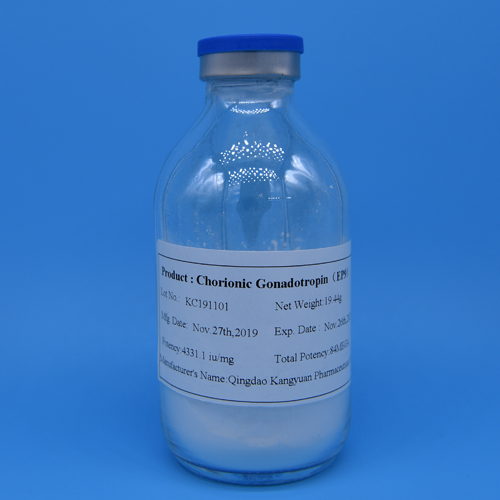When it comes to fertility treatments and reproductive health,
Urofollitropin is a name that often surfaces. If you're considering its use,
whether for personal fertility - related reasons or as part of a medical
research or treatment - development project, you likely have a lot of questions.
Let's dive into the key inquiries and get you the answers you need.
What Exactly is Urofollitropin and How Does It Work?
Urofollitropin is a purified form of follicle - stimulating hormone (FSH).
In the body, FSH plays a crucial role in the development of ovarian follicles in
women. Urofollitropin, when administered, mimics the natural FSH action. It
binds to specific receptors on the ovarian cells, stimulating the growth and
maturation of follicles. This process is essential for ovulation, making
Urofollitropin a vital component in many fertility treatment regimens.
What Are the Main Applications of Urofollitropin?
The primary application of Urofollitropin is in treating female
infertility. It helps women who have ovulation disorders, such as polycystic
ovary syndrome (PCOS), to ovulate regularly. Additionally, in in - vitro
fertilization (IVF) procedures, Urofollitropin is used to stimulate the ovaries
to produce multiple mature eggs. This increases the chances of successful
fertilization and embryo transfer. In some cases, it can also be used in men
with certain fertility issues to stimulate sperm production, although its use in
men is less common.
How Should Urofollitropin Be Administered?
Urofollitropin is typically administered via subcutaneous injection. The
injection site should be clean and dry. It's important to rotate injection sites
to prevent skin irritation and ensure proper absorption. The dosage and
frequency of administration vary depending on the individual's condition and the
treatment plan. Your healthcare provider will carefully determine the right
dosage for you, which may start with a lower dose and be adjusted based on your
response, as monitored through ultrasound scans and hormone level tests.

What Precautions Should I Take When Using Urofollitropin?
Before starting Urofollitropin treatment, inform your doctor about all your
medical conditions, including any history of ovarian cysts, thyroid problems, or
diabetes. Let them know about all the medications you're taking, as some drugs
may interact with Urofollitropin. During treatment, closely monitor your body
for any signs of ovarian hyperstimulation syndrome (OHSS), such as abdominal
pain, bloating, rapid weight gain, or shortness of breath. If you experience any
of these symptoms, contact your doctor immediately.
Where Can I Source High - Quality Urofollitropin?
When looking for Urofollitropin, it's crucial to source it from a reliable
and reputable supplier. Look for suppliers who adhere to strict quality control
measures, have proper certifications, and can provide detailed product
information. A good supplier will also offer excellent customer support,
including guidance on storage, handling, and any questions you may have about
the product.
In conclusion, Urofollitropin is a powerful tool in the field of fertility.
By understanding its mechanism, applications, administration, precautions, and
sourcing, you can make informed decisions. Whether you're a patient on the
journey to parenthood or a medical professional involved in fertility
treatments, Urofollitropin can be a game - changer when used correctly. Don't
hesitate to consult with your healthcare provider and explore the possibilities
it offers.